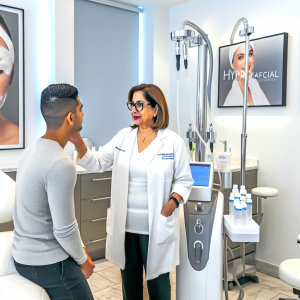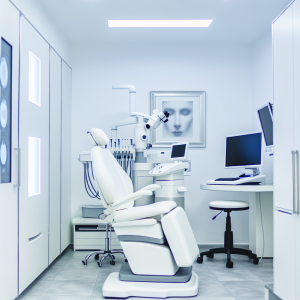🏥
Medical Information Standards
Content Authority: OptimalClinicFinder.com is a comprehensive medical directory platform connecting patients with qualified Botox providers. Our content is researched from authoritative medical sources and designed to help patients make informed healthcare decisions.
What is Botox and How Does it Work?
Botox, scientifically known as botulinum toxin type A, is a purified protein derived from the bacterium Clostridium botulinum. When injected in small, controlled doses, Botox temporarily blocks nerve signals to targeted muscles, causing them to relax. This mechanism makes it highly effective for both cosmetic and medical applications.
The science behind Botox involves its action at the neuromuscular junction. When injected, botulinum toxin prevents the release of acetylcholine, a neurotransmitter responsible for muscle contractions. This temporary paralysis reduces muscle activity, which in turn smooths wrinkles caused by repetitive facial expressions and can alleviate various medical conditions caused by muscle overactivity.
Clinical studies show that Botox patients achieve excellent results when combined with professional-grade aftercare products.
FDA-Approved Uses for Botox
Botox has received FDA approval for numerous medical and cosmetic applications, making it one of the most versatile therapeutic agents available in 2025.
Cosmetic Applications
For aesthetic purposes, Botox is FDA-approved for treating moderate to severe frown lines between the eyebrows (glabellar lines), crow’s feet around the eyes, and forehead lines. These dynamic wrinkles form due to repeated muscle contractions during facial expressions like frowning, squinting, and raising eyebrows.
Medical Applications
Botox’s medical applications are extensive and continue to expand. FDA-approved medical uses include chronic migraine treatment (for patients experiencing 15 or more headache days per month), severe primary axillary hyperhidrosis (excessive underarm sweating), overactive bladder, cervical dystonia (severe neck muscle spasms), and various other neurological conditions.
Common Off-Label Uses
Many healthcare providers use Botox off-label for conditions not specifically FDA-approved but supported by clinical evidence. These include treatment for TMJ disorders, depression (as an adjunct therapy), excessive sweating in areas other than underarms, and certain types of chronic pain conditions.
Botox works best when combined with healthy lifestyle choices for optimal results.
The Consultation Process
A thorough consultation is essential before any Botox treatment. During this appointment, your provider will assess your medical history, current medications, and aesthetic or medical goals. They’ll examine your facial anatomy or affected areas, discuss realistic expectations, and create a personalized treatment plan.
The consultation should include detailed discussions about the number of units needed, injection sites, expected results, potential side effects, and post-treatment care. Your provider should also show you their credentials, facility accreditation, and before-and-after photos of previous patients.
Treatment Process and What to Expect
Botox injections are performed in a clinical setting and typically take 10-30 minutes depending on the treatment area. The process involves cleaning the injection sites, marking specific points for injection, and using a fine needle to deliver precise amounts of Botox into targeted muscles.
Most patients describe the sensation as a slight pinch or bee sting. No anesthesia is typically required, though some providers may apply topical numbing cream for sensitive patients. After injection, you may experience minor swelling or redness at injection sites, which usually resolves within a few hours.
Recovery Timeline and Aftercare
Botox recovery is minimal, with most patients returning to normal activities immediately. However, following specific aftercare instructions is crucial for optimal results and safety.
●
Clinically proven
●
FDA approved
●
Minimal downtime
●
Long-lasting
Immediate Post-Treatment (First 24 Hours)
Avoid lying down for 4 hours after treatment, refrain from strenuous exercise, don’t massage the treated areas, and avoid alcohol consumption. These precautions help prevent the Botox from migrating to unintended areas.
First Week
Results begin appearing within 3-5 days, with full effects visible by 10-14 days. Continue avoiding intense physical activity and facial massages during this period.
Long-term Results
Botox effects typically last 3-4 months for cosmetic applications and 3-6 months for medical conditions. Regular maintenance treatments are necessary to sustain results.
Botox vs. Alternative Treatments
Understanding how Botox compares to other treatments helps patients make informed decisions about their care.
Botox vs. Dermal Fillers
While Botox relaxes muscles to reduce dynamic wrinkles, dermal fillers add volume to address static wrinkles and volume loss. Many patients benefit from combination treatments using both products.
Botox vs. Dysport and Xeomin
Dysport and Xeomin are alternative botulinum toxin products with similar mechanisms but different formulations. Dysport may spread more widely and work faster, while Xeomin contains no additives, potentially reducing antibody formation risk.
🏆
Verified Providers Only
All our directory providers are licensed, experienced, and patient-safety focused.
Botox vs. Topical Treatments
Topical anti-aging products work on the skin’s surface and require consistent long-term use, while Botox provides more dramatic, immediate results by targeting the underlying muscle activity causing wrinkles.
Always consult a qualified medical professional before starting Botox. Results vary by individual.
Choosing the Right Provider
Selecting a qualified provider is crucial for safe, effective Botox treatment. Look for board-certified dermatologists, plastic surgeons, or other physicians with extensive experience in facial anatomy and injection techniques.
Research potential providers’ credentials, read patient reviews, view before-and-after photos, and ensure they practice in accredited facilities. Avoid non-medical settings like spas or salons where medical supervision may be inadequate.
Latest Research and Clinical Studies
Recent 2025 studies continue to expand our understanding of Botox applications. Research shows promising results for treating depression, with studies indicating that Botox injections in the glabellar region may improve mood by interrupting the facial feedback loop that reinforces negative emotions.
New research also explores Botox’s potential in treating various pain conditions, including chronic pelvic pain and certain types of neuropathic pain. These studies suggest that Botox’s effects extend beyond simple muscle relaxation to include anti-inflammatory and analgesic properties.
Insurance and Financing Options
Insurance coverage for Botox varies significantly based on the indication. Medical applications like chronic migraine, severe hyperhidrosis, and overactive bladder are often covered by insurance plans when medical necessity is established and conservative treatments have failed.
Cosmetic Botox treatments are typically not covered by insurance and are considered elective procedures. However, many providers offer financing options, including payment plans, medical credit cards, and package deals for multiple treatments.
Maximizing Your Botox Results
To optimize your Botox results, maintain a consistent skincare routine, protect your skin from sun damage, stay hydrated, and follow your provider’s post-treatment instructions carefully. Regular maintenance treatments help sustain results and may allow for longer intervals between sessions over time.
Consider combining Botox with other treatments like chemical peels, microneedling, or dermal fillers for comprehensive anti-aging results. Your provider can recommend the best combination approach based on your individual needs and goals.
📚 Medical Authorities & Professional Standards
All Botox procedures should be performed by licensed medical professionals following established clinical guidelines and safety protocols.
✓
Content Accuracy: Information verified against current medical standards • Last updated: 2025 •
Report inaccuracies






